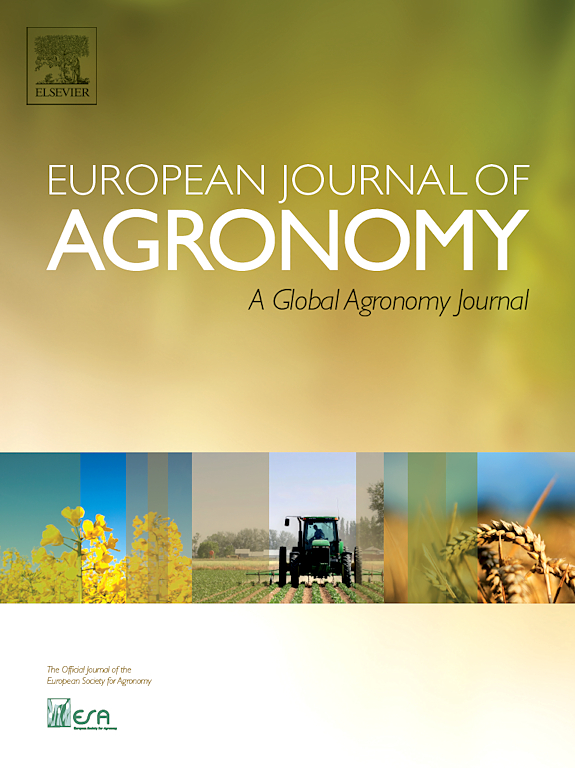Ver ítem
- xmlui.general.dspace_homeCentros Regionales y EEAsCentro Regional Buenos Aires SurEEA BalcarceArtículos científicosxmlui.ArtifactBrowser.ItemViewer.trail
- Inicio
- Centros Regionales y EEAs
- Centro Regional Buenos Aires Sur
- EEA Balcarce
- Artículos científicos
- Ver ítem
A time-window within the grain filling period accounted for early leaf senescence in maize under sink limitation
Resumen
In annual crops such as maize, assimilates demand exerted by grains converges with increasing leaf senescence. As sink demand changes as grains growth, leaf senescence could also be affected during the grain filling period. In this work, we evaluated the effect of a decrease in sinks demand at different moments of the grain filling period on maize leaf senescence. Sinks were modified in field experimentation via restriction of pollination or ear removal
[ver mas...]
In annual crops such as maize, assimilates demand exerted by grains converges with increasing leaf senescence. As sink demand changes as grains growth, leaf senescence could also be affected during the grain filling period. In this work, we evaluated the effect of a decrease in sinks demand at different moments of the grain filling period on maize leaf senescence. Sinks were modified in field experimentation via restriction of pollination or ear removal at four different times during the grain filling period. These growth and senescence-related-variables were periodically assessed: dry matter, stem carbohydrates, leaf initiation, leaf area, chlorophyll, sap flow and photosynthesis. Restriction of pollination and ear removal increased stem carbohydrates concentration and stem dry matter. Leaf senescence was accelerated only when ear was removed at R3 and R4 phenological stages. The magnitude of the effect was leaf position-dependent. A simple model relating leaf area duration or the area under the chlorophyll evolution curve with leaves age accounted for the observed results. Protecting grains during this window would avoid a decrease in grain yield both due to direct damage to the grains and the source reduction for advanced leaf senescence. These results would be of interest to producers, breeders and modelers of this crop.
[Cerrar]

Fuente
European Journal of Agronomy 152 : 127027 (January 2024)
Fecha
2024-01
Editorial
Elsevier
ISSN
1161-0301 (Print)
1873-7331 (Online)
1873-7331 (Online)
Formato
pdf
Tipo de documento
artículo
Palabras Claves
Derechos de acceso
Restringido
 Excepto donde se diga explicitamente, este item se publica bajo la siguiente descripción: Creative Commons Attribution-NonCommercial-ShareAlike 2.5 Unported (CC BY-NC-SA 2.5)
Excepto donde se diga explicitamente, este item se publica bajo la siguiente descripción: Creative Commons Attribution-NonCommercial-ShareAlike 2.5 Unported (CC BY-NC-SA 2.5)


